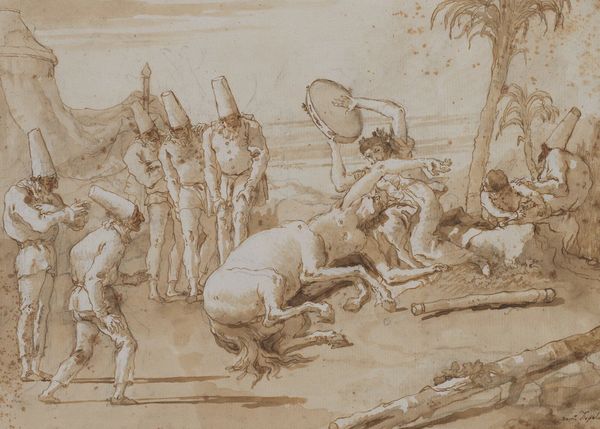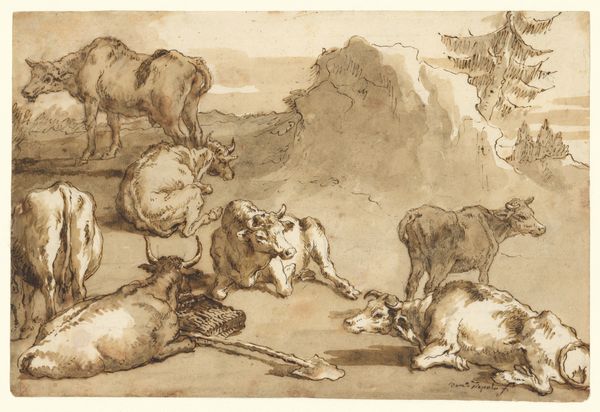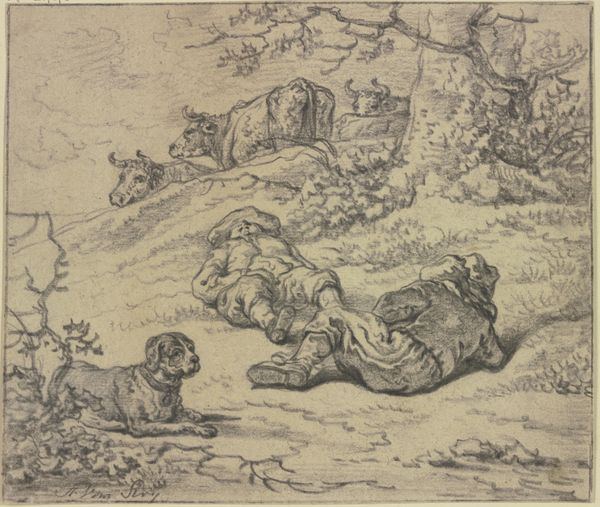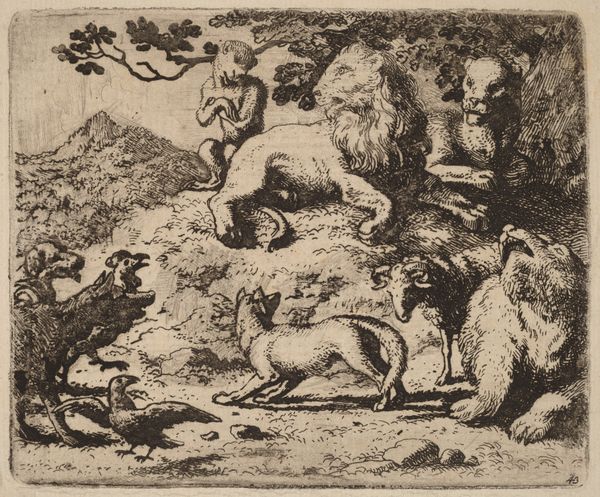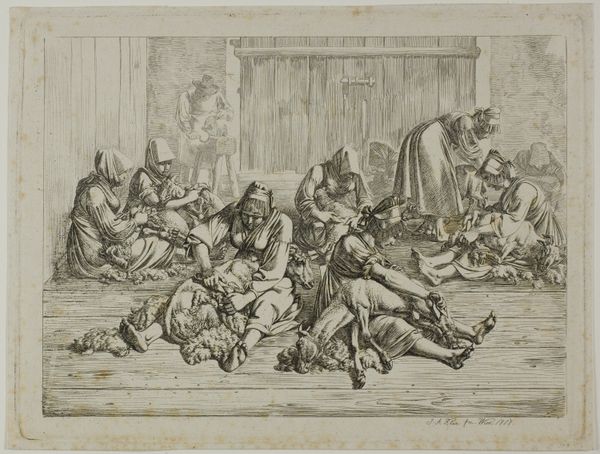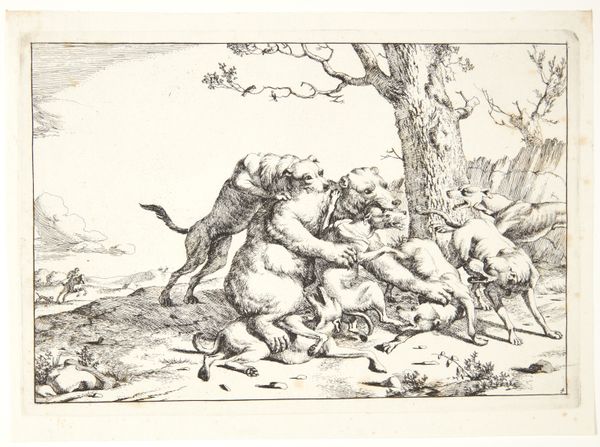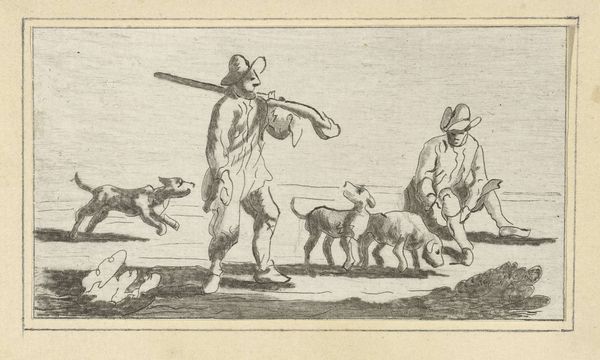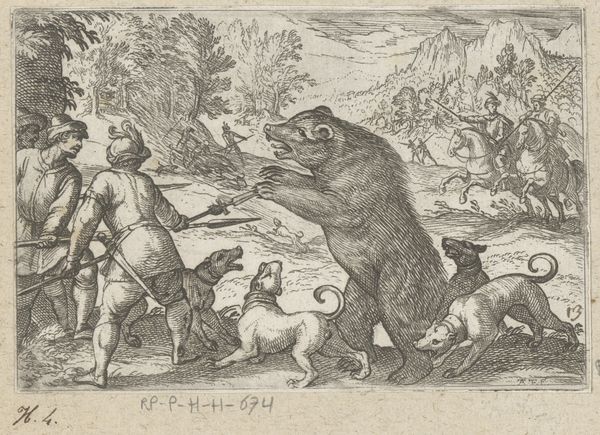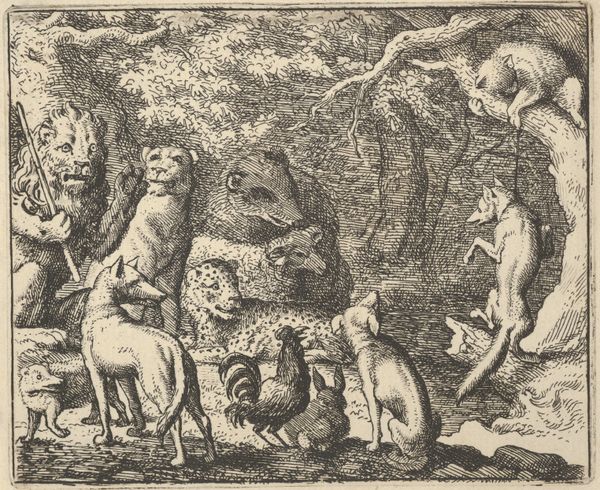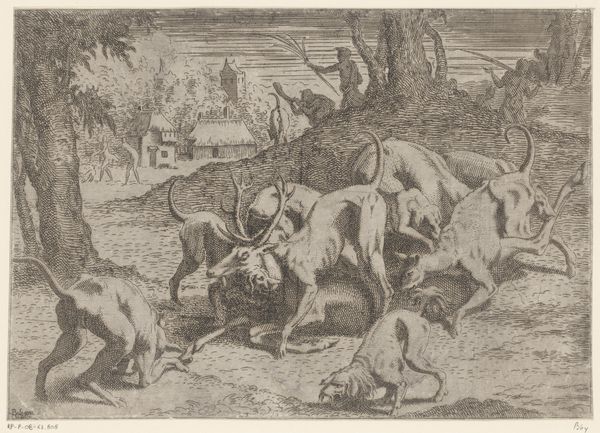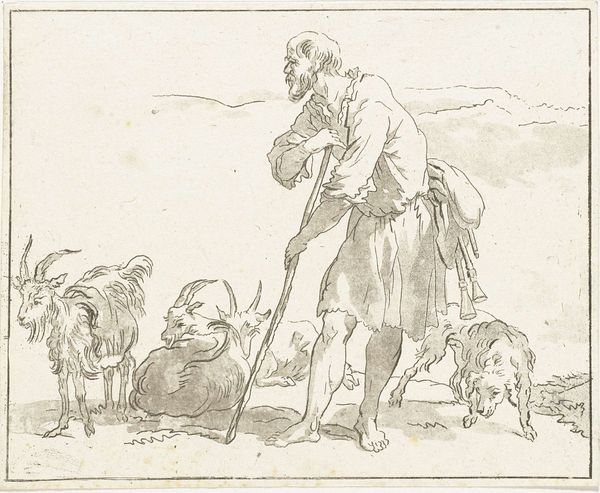
Eight Monkeys, a Dead Goose, and a Cormorant mid-18th–early 19th century
0:00
0:00
drawing
#
drawing
#
landscape
#
figuration
#
genre-painting
#
italian-renaissance
Copyright: Public Domain: Artvee
Giovanni Domenico Tiepolo rendered this scene using brown ink and wash over graphite, presenting us with a tableau vivant of monkeys, a dead goose, and a cormorant. Monkeys, often symbols of base instincts and mimicry, here, are the primary actors. Their presence evokes a sense of the grotesque, as if humanity's foibles are laid bare. We see this reflected in the Flemish "singerie," where monkeys enact human scenes, a mirror held up to society. The dead goose, a symbol of vanity and foolishness, underscores a critique of human vanity. Note how these symbols resurface across history, evolving. The monkey, once a symbol of transformation in ancient Egypt, became intertwined with folly and mockery. The goose, sacred to some cultures, becomes a symbol of excess. These images tap into our collective memory, evoking primal associations with nature, instinct, and the grotesque, a powerful and enduring force.
Comments
No comments
Be the first to comment and join the conversation on the ultimate creative platform.
